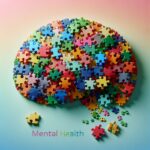Key Takeaways
- Deep breathing can quickly reduce anxiety; try inhaling for 4 seconds, holding for 4, and exhaling for 4.
- Mindfulness meditation reduces anxiety and can be as effective as medication for some.
- Regular yoga practice can lower cortisol levels, reducing stress.
- Exercise boosts endorphins, helping to alleviate anxiety symptoms.
- Limiting caffeine and alcohol can improve anxiety management.
Effective Anxiety-Calming Techniques & Methods
Dealing with anxiety is a common challenge that many face daily. Whether it’s a constant feeling of unease or occasional overwhelming stress, finding effective methods to calm anxiety is crucial. This article explores various techniques that can help alleviate anxiety, allowing you to lead a more balanced and peaceful life.
Anxiety’s Impact on Daily Life
Anxiety can manifest in numerous ways, impacting both the mind and body. For some, it results in physical symptoms like headaches, rapid heartbeat, or stomach issues. Others may experience mental challenges such as racing thoughts, difficulty concentrating, or irritability. The ripple effect of anxiety can affect relationships, work performance, and overall quality of life.
“Research has shown that doing yoga regularly can result in reduced cortisol, a key stress hormone.” – Thirthalli et al., 2013
Understanding the impact of anxiety is the first step in managing it. Recognizing its presence and acknowledging how it affects your daily life can motivate you to seek effective calming techniques.
Why Calming Techniques Matter
Calming techniques are not just about momentary relief; they are about creating lasting change. When practiced regularly, these techniques can help reduce the frequency and intensity of anxiety episodes. They empower you to take control of your emotional responses and build resilience against stressors.
Moreover, incorporating calming techniques into your routine can improve overall mental health. They offer a proactive approach to managing anxiety, which is crucial for long-term well-being. By prioritizing these methods, you invest in a healthier, more balanced lifestyle.
Breathing Techniques for Anxiety
Breathing is a powerful tool in managing anxiety. It is both accessible and effective, making it an ideal first step for those looking to calm their minds.
Deep Breathing Basics
Deep breathing involves taking slow, deliberate breaths, which can help calm the nervous system. For a holistic approach to wellness, consider integrating balanced nutrition tips into your routine. Here’s a simple way to practice:
- Sit or lie down in a comfortable position.
- Inhale slowly through your nose for a count of four.
- Hold your breath for another count of four.
- Exhale slowly through your mouth for a count of four.
- Repeat this cycle for a few minutes, focusing on your breath.
Deep breathing can help reduce the physiological symptoms of anxiety, such as a racing heart or shallow breathing, providing a sense of calm and control. For more on managing anxiety, explore calming techniques for the fight or flight response.
Diaphragmatic Breathing Instructions
Diaphragmatic breathing, also known as belly breathing, engages the diaphragm rather than the chest. This technique enhances relaxation and oxygen flow, which can be particularly helpful in managing the fight or flight response. Follow these steps:
- Place one hand on your chest and the other on your belly.
- Inhale deeply through your nose, allowing your belly to rise while your chest remains still.
- Exhale slowly through your mouth, feeling your belly fall.
- Continue this pattern for several minutes, focusing on the rise and fall of your belly.
This method can be particularly effective in reducing tension and promoting a state of calm. For more on calming techniques, you can explore the fight or flight response and its calming techniques.
Box Breathing Steps
Box breathing is a structured breathing technique that can quickly reduce stress and anxiety. It’s often used by athletes and military personnel for its calming effects. Here’s how to do it:
- Inhale through your nose for a count of four.
- Hold your breath for a count of four.
- Exhale slowly through your mouth for a count of four.
- Hold your breath again for a count of four.
- Repeat this cycle for several minutes.
Box breathing helps focus the mind and regulate the body’s stress response, making it a powerful tool for anxiety management.
Mindfulness and Meditation
Mindfulness and meditation are proven techniques that can significantly reduce anxiety. They encourage a focus on the present moment, helping to quiet the mind and reduce stress. For more ways to calm your mind, explore these calming techniques that can complement your mindfulness practice.
Guided Meditation Benefits
Guided meditation involves listening to a narrator who leads you through the meditation process. This can be particularly helpful for beginners who may find it challenging to meditate independently. Benefits include:
- Enhanced focus and concentration.
- Reduced anxiety and stress levels.
- Improved emotional regulation.
Guided meditation is accessible through various apps and online platforms, making it easy to incorporate into your daily routine.
Yoga for Stress Reduction
Yoga is more than just physical exercise; it’s a holistic practice that unites the mind, body, and spirit. By focusing on breath control and body postures, yoga can significantly reduce stress and anxiety. Regular practice helps lower cortisol levels, the body’s primary stress hormone. This not only aids in calming the mind but also improves physical health by reducing inflammation and enhancing immunity.
One of the key benefits of yoga is its ability to promote relaxation through various poses and breathing techniques. For example, the Child’s Pose and Corpse Pose are excellent for calming the nervous system. By integrating yoga into your routine, even for just 15 minutes a day, you can experience noticeable reductions in anxiety and stress.
Exercise and Endorphin Release
Exercise is a natural and effective way to combat anxiety. When you engage in physical activity, your body releases endorphins, chemicals that act as natural painkillers and mood elevators. This release helps improve mood and reduces stress levels, making exercise a powerful tool in managing anxiety.
Activities like running, swimming, or cycling are particularly effective because they increase heart rate and promote endorphin release. However, any form of physical activity, even a brisk walk, can be beneficial. The key is consistency; aim for at least 30 minutes of exercise most days of the week to maintain optimal mental health.
Simple Home Exercises
You don’t need a gym membership to reap the benefits of exercise. Simple home exercises can be just as effective in reducing anxiety. Consider incorporating bodyweight exercises like push-ups, squats, or lunges into your routine. These exercises require no equipment and can be done in the comfort of your home.
Additionally, consider trying home workout videos or apps that guide you through routines. These resources can provide structure and motivation, helping you stay consistent with your exercise routine. Remember, the goal is to move your body regularly, which can help alleviate anxiety symptoms over time.
Cognitive Methods to Manage Anxiety
Cognitive methods focus on changing thought patterns to manage anxiety effectively. By addressing the root cause of anxious thoughts, you can develop healthier coping mechanisms and improve your overall mental health.
These methods are particularly beneficial because they empower you to take control of your thoughts, rather than being controlled by them. This shift in mindset can lead to lasting changes in how you perceive and respond to stressors.
Cognitive Behavioral Therapy (CBT)
Cognitive Behavioral Therapy, or CBT, is a widely used therapeutic approach that helps individuals understand and change negative thought patterns. CBT focuses on the connection between thoughts, feelings, and behaviors, teaching individuals how to identify and challenge distorted thinking.
Through CBT, you learn to replace negative thoughts with more realistic and positive ones, reducing anxiety and improving emotional well-being. This therapy can be conducted with a licensed therapist, but there are also self-help books and online resources available for those who prefer a self-guided approach.
Journaling to Process Emotions
Journaling is a simple yet powerful tool for processing emotions and reducing anxiety. By writing down your thoughts and feelings, you can gain clarity and perspective on your experiences. Journaling allows you to express emotions in a safe and private space, which can be incredibly therapeutic.
Consider setting aside a few minutes each day to journal. Write about your thoughts, feelings, and any events that may have triggered anxiety. This practice can help you identify patterns and triggers, making it easier to develop coping strategies. Over time, journaling can lead to increased self-awareness and emotional regulation.
Reframing Negative Thoughts
Reframing is a cognitive technique that involves changing the way you perceive a situation. By altering your perspective, you can reduce anxiety and improve your emotional response. This technique is particularly useful when dealing with negative thoughts or self-talk.
For example, if you catch yourself thinking, “I’ll never be able to do this,” try reframing it to, “This is challenging, but I can learn and improve.” This shift in mindset can help you approach situations with a more positive and constructive attitude, reducing anxiety in the process. For more insights on managing anxiety, explore these calming techniques.
Essential Lifestyle Adjustments
Making certain lifestyle adjustments can have a significant impact on anxiety levels. These changes focus on improving overall well-being, which in turn, helps manage anxiety more effectively.
By addressing factors like diet, sleep, and substance use, you can create a supportive environment for mental health. These adjustments are not just about reducing anxiety; they’re about enhancing your quality of life.
Role of Nutrition in Mental Health
Nutrition plays a crucial role in mental health. A balanced diet rich in nutrients supports brain function and can help reduce anxiety. Foods high in omega-3 fatty acids, such as salmon and walnuts, are known to promote brain health. Additionally, whole grains, fruits, and vegetables provide essential vitamins and minerals that support mental well-being. For more information, check out this balanced nutrition guide.
On the other hand, processed foods and high sugar intake can negatively impact mood and exacerbate anxiety symptoms. Consider making dietary changes that focus on whole, nutrient-dense foods to support mental health and reduce anxiety.
Sleep and Anxiety Correlation
Sleep and anxiety are closely linked. Poor sleep can increase anxiety levels, while anxiety can disrupt sleep patterns. This cycle can be challenging to break, but improving sleep hygiene can help.
Establish a consistent sleep schedule by going to bed and waking up at the same time each day. Create a relaxing bedtime routine, and limit exposure to screens before bed. Ensuring you get adequate, restful sleep can significantly reduce anxiety and improve overall well-being.
Limiting Caffeine and Alcohol
Caffeine and alcohol can both contribute to anxiety. Caffeine, a stimulant, can increase heart rate and exacerbate anxiety symptoms. Alcohol, although a depressant, can disrupt sleep and affect mood regulation. For more tips, you can explore ways to ease anxiety effectively.
Consider reducing or eliminating caffeine and alcohol from your diet to see if it improves anxiety symptoms. Opt for herbal teas or decaffeinated beverages instead. These changes can help stabilize mood and reduce anxiety over time.
The Role of Support Systems
Support systems are invaluable when managing anxiety. Having a network of supportive individuals can provide comfort, encouragement, and practical help during challenging times.
Whether it’s friends, family, or professional support, having someone to talk to can make a significant difference in how you cope with anxiety. Building and maintaining these relationships is an essential part of managing anxiety effectively. For those interested in exploring professional support, family therapy can be a beneficial method to consider.
Seeking Professional Help
Sometimes, despite your best efforts, anxiety can feel overwhelming. In these cases, seeking professional help is a wise decision. Therapists and counselors can provide guidance, support, and effective treatment options tailored to your needs. Cognitive Behavioral Therapy (CBT), for instance, is a common approach that helps you understand and change negative thought patterns.
Talking with Family and Friends
Opening up to family and friends about your anxiety can be incredibly beneficial. These individuals can offer emotional support and understanding, helping you feel less alone in your struggles. Having someone to listen and provide a different perspective can make a significant difference.
Besides that, friends and family can also help you stay accountable in practicing calming techniques and making necessary lifestyle changes. Their encouragement can motivate you to continue working towards managing your anxiety effectively.
Community Support Resources
Community resources, such as support groups, can be valuable for those dealing with anxiety. These groups provide a safe space to share experiences, learn from others, and gain insights into managing anxiety. They often bring together individuals who understand what you’re going through, fostering a sense of community and belonging.
Additionally, many communities offer workshops and seminars focused on mental health and anxiety management. These events can provide valuable information and introduce you to new techniques and strategies.
- Local mental health organizations
- Online support groups and forums
- Workshops and seminars on anxiety management
Utilizing these resources can enhance your support network and provide additional tools for managing anxiety. For more insights, explore this guide on calming techniques.
Conclusion: Finding What Works for You
Managing anxiety is a personal journey, and what works for one person may not work for another. It’s essential to experiment with different techniques and find what resonates with you. Whether it’s breathing exercises, meditation, or lifestyle changes, the key is consistency and commitment.
Remember, managing anxiety is not about eliminating it entirely but rather learning how to navigate it effectively. With time and practice, you can develop a toolkit of strategies that help you cope with anxiety in various situations.
Most importantly, be patient with yourself. Progress may be slow, but every small step counts. Celebrate your successes and learn from setbacks, using them as opportunities for growth and improvement.
“Yoga, tai chi, and qigong combine rhythmic breathing with a series of postures or flowing movements, offering a mental focus that can help distract you from racing thoughts.” – Harvard Health
Experimenting with Techniques
Experimentation is crucial in finding effective anxiety-calming techniques. Try different methods, track your experiences, and note what works best for you. You may find that a combination of techniques is most effective.
For example, you might start your day with a short meditation, incorporate deep breathing during stressful moments, and unwind with yoga in the evening. By creating a routine that incorporates various techniques, you can address anxiety from multiple angles.
“For some people, relaxation techniques like the ones described above can function as a way to avoid unwanted negative emotions—and they paradoxically end up increasing emotional distress.” – Harvard Health
Pay attention to how each technique makes you feel and adjust your routine accordingly. Over time, you’ll develop a personalized approach to managing anxiety that fits your lifestyle and needs.
Recognizing Improvement Signs
As you practice these techniques, be mindful of signs of improvement. You may notice reduced anxiety symptoms, increased resilience to stress, or improved emotional regulation. These changes may be subtle at first, but they indicate progress.
Frequently Asked Questions
Managing anxiety can raise several questions. Here are answers to some common queries:
What is the quickest way to calm anxiety?
Deep breathing is one of the quickest ways to calm anxiety. It can be done anywhere and helps slow the heart rate, reducing anxiety symptoms rapidly.
How often should I practice these techniques?
For best results, practice anxiety-calming techniques daily. Consistency is key to building resilience and managing anxiety effectively over time.
Can lifestyle changes alone manage anxiety? For those looking to explore effective methods, incorporating relaxation techniques can be a beneficial step towards managing anxiety symptoms.
While lifestyle changes can significantly impact anxiety management, they may not be sufficient for everyone. Combining lifestyle changes with other techniques, such as therapy or medication, may be necessary for some individuals.
When should I seek professional help? If you find yourself struggling to manage anxiety on your own, it might be time to consider professional guidance. According to the Mayo Clinic Health System, recognizing when to seek help is crucial in managing anxiety effectively.
If anxiety interferes with your daily life, relationships, or work, it may be time to seek professional help. A therapist can provide personalized guidance and support.
- Difficulty managing anxiety on your own
- Persistent anxiety symptoms
- Impact on daily functioning and well-being
Recognizing when to seek help is crucial for effective anxiety management.
How do I know if a technique is working for me?
Pay attention to how you feel before and after practicing a technique. If you notice reduced anxiety symptoms, increased relaxation, or improved mood, the technique is likely working for you. Keep track of your experiences to identify patterns and refine your approach.










Leave a Reply